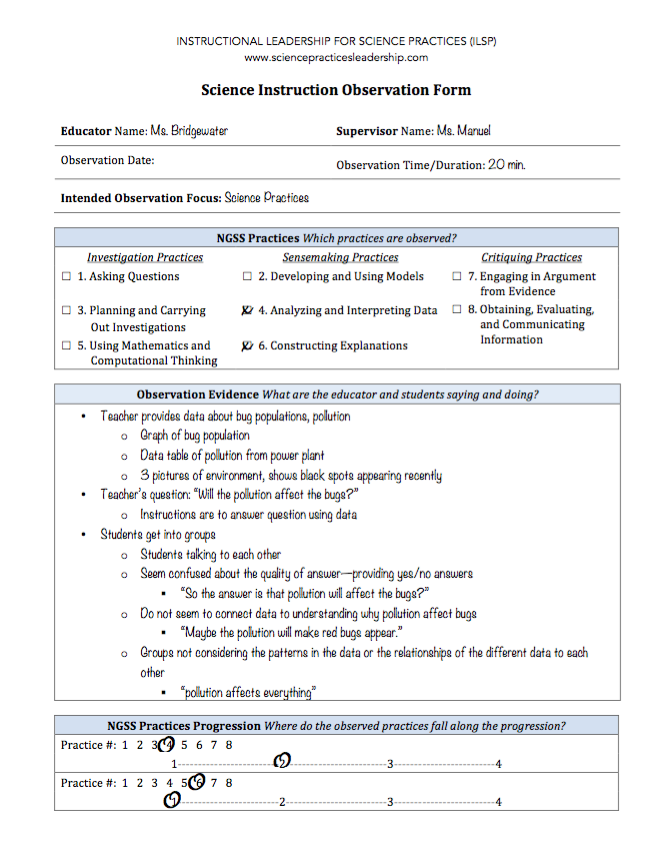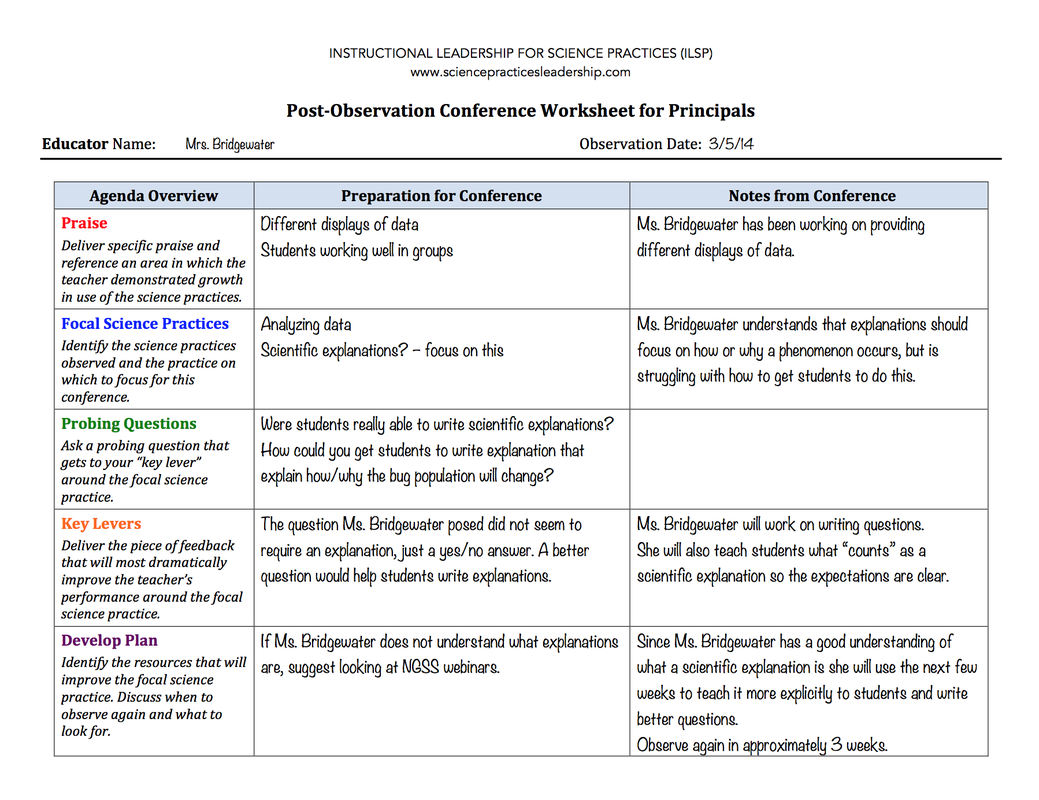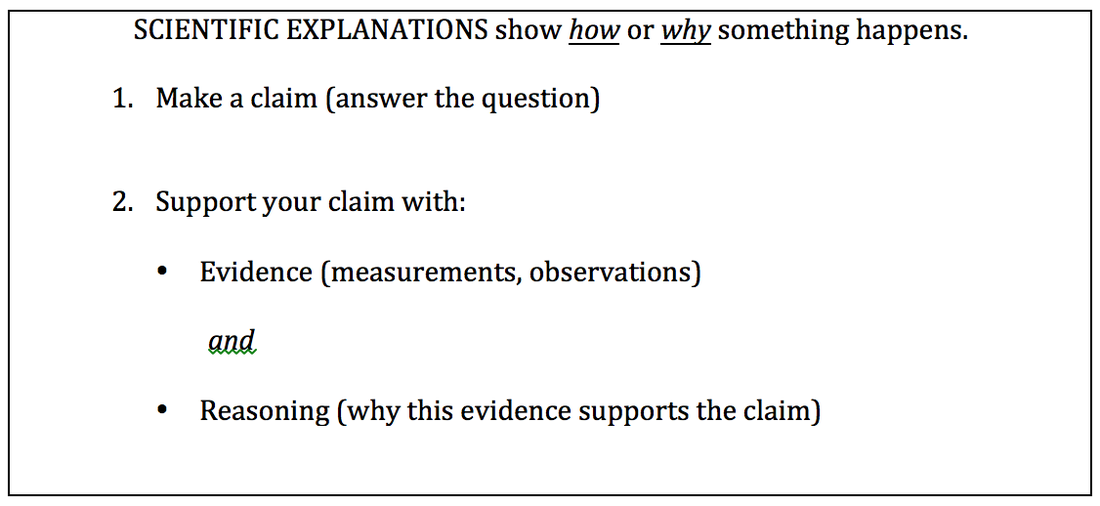Case Study: Grade 6 Conference
|
Focal Science Practices:
Related NGSS Performance Expectations: MS-LS4-3: Construct an explanation based on evidence that describes how genetic variation of traits in a population increase some individuals’ probability of surviving and reproducing in a specific environment. Transcript
|
Tools
Initial Observation Form
Conference Worksheet
Follow-Up Observation Form
|
|
Ms. Bridgewater: Good. Today you are each going to write your own explanation and tomorrow we will have a chance to share them with each other and give each other feedback.
Kendra: Can we change them after that? Ms. Bridgewater: Of course. That is what scientists do. They critique each other’s work so everyone’s work gets better. But today, focus on making sure your explanation uses data to explain why you think one species of bird will have the most offspring. The students write. Ms. Manuel asks to read Jill’s explanation when she is done. She then asks to read Luke’s explanation.
|
PLACEHOLDER
|





